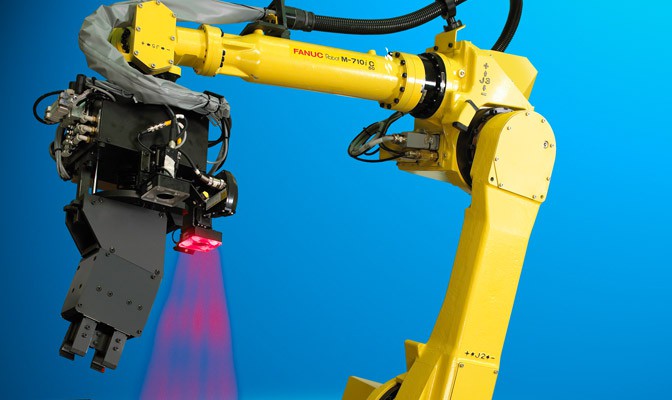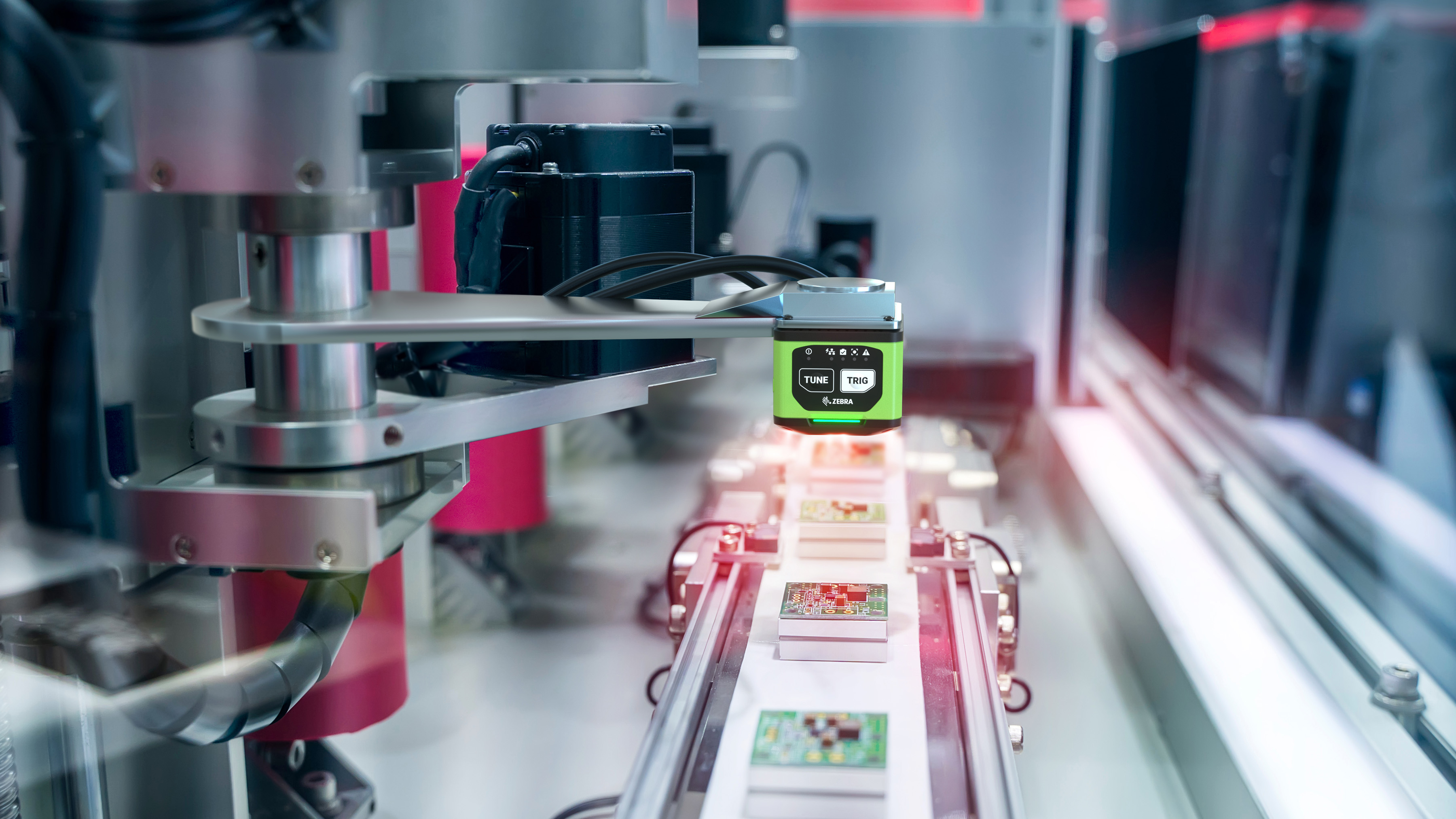What to consider before purchasing optical fibre diameter analyser systems
Why Robotic Vision Is Crucial for Advancing Precision in Production Industries
Robotic vision has become a vital element in modern-day production. It empowers devices to analyze aesthetic data with exceptional precision. This capability enhances quality assurance and minimizes the probability of flaws. As sectors endeavor for better performance, comprehending the ins and outs of robotic vision comes to be important. The interaction in between technology and operational processes increases vital questions about future advancements and their effects. What exists in advance for precision in manufacturing?
Comprehending Robotic Vision Technology

Enhancing High Quality Control With Robotic Vision

Boosting Functional Performance With Automation

Automating manufacturing procedures with robotic vision significantly boosts manufacturing speed, permitting for quicker turn-around times. This innovation additionally reduces mistake rates, making sure higher accuracy in procedures. Additionally, streamlined source management is accomplished, leading to extra efficient usage of materials and labor.
Enhanced Manufacturing Speed
While the integration of robotic vision in production has changed operational procedures, its most considerable advantage exists in boosted production speed. By utilizing advanced image handling and real-time data evaluation, robotic vision systems can promptly determine and respond to manufacturing needs. This accelerated responsiveness gets rid of hold-ups generally associated with hand-operated assessment and decision-making procedures. In addition, these systems can run continually without fatigue, ensuring that production lines maintain high throughput. The ability to detect and attend to problems instantly additionally streamlines operations, allowing manufacturers to optimize output levels (optical measurement system). Companies benefit from minimized cycle times and raised productivity, positioning them competitively in the market. Enhanced manufacturing rate, driven by robotic vision modern technology, eventually results in enhanced functional performance across the manufacturing landscape
Decreased Error Rates
As production rate increases, maintaining accuracy ends up being vital in making procedures. Robotic vision systems considerably add to lowered error rates by giving accurate dimensions and real-time evaluations. These advanced systems use high-resolution cameras and advanced formulas to detect problems, imbalances, or variances in items during assembly. By automating top quality control, suppliers can swiftly recognize and correct problems that human inspectors might forget. This not only decreases waste however additionally boosts overall item quality. Additionally, the assimilation of robotic vision lowers irregularity in manufacturing, making certain that each product fulfills strict specs. Subsequently, suppliers experience fewer costly recalls and enhanced customer complete satisfaction, inevitably bring about a more effective and successful operational version.
Streamlined Source Administration
Reliable source management is essential for making the most of functional performance in production, particularly when integrated with robotic vision systems. These systems improve the capacity to monitor and assign sources precisely, guaranteeing that materials and labor are made use of efficiently. By utilizing innovative visual technologies, manufacturers can determine inefficiencies in actual time, decreasing waste and improving production timelines. Additionally, robotic vision allows accurate supply monitoring, minimizing the danger of overstocking or stockouts. Automation of these procedures not just enhances procedures yet likewise enables human workers to concentrate on higher-value jobs, fostering development and performance. Consequently, business can accomplish considerable cost financial savings while keeping these details top quality requirements, ultimately positioning themselves extra competitively in the sector.

Lowering Human Mistake in Production Processes
Human mistake continues to be a substantial challenge in producing processes, commonly bring about expensive blunders and inadequacies. In settings where accuracy is extremely important, also minor lapses in judgment can lead to defective products or delays in production routines. Robotic vision systems can alleviate these risks by supplying accurate and constant monitoring of producing operations. By automating tasks such as quality assurance and production line inspections, these systems lower the dependence on human oversight, therefore decreasing the capacity for errors.Moreover, robotic vision innovation enhances information precision, enabling for real-time adjustments based on visual feedback. This capacity ensures that any type of variances from developed standards are without delay determined and dealt with, even more decreasing the likelihood of errors. As suppliers progressively adopt robotic vision, they can anticipate not only to improve accuracy and performance however additionally to cultivate a safer working setting by relieving the pressure on human operators.
The Function of Expert System in Robotic Vision
Artificial knowledge significantly improves robotic vision by utilizing device knowing formulas and progressed image handling strategies. These innovations allow robots to interpret aesthetic data with greater accuracy, boosting both effectiveness and precision in making settings. As an outcome, the integration of AI right into robotic vision systems represents an essential development in automation.
Artificial Intelligence Algorithms
Maker understanding algorithms are revolutionizing robotic vision in production by making it possible for equipments to interpret and evaluate visual information with remarkable accuracy. These formulas permit robotics to gain from vast datasets, adjusting to brand-new circumstances and improving their performance with time. By leveraging methods such as monitored and unsupervised discovering, robotic systems can recognize patterns and anomalies in real-time, which boosts quality control and minimizes waste. Furthermore, artificial intelligence assists in much better decision-making procedures, allowing robots to enhance their activities based upon discovered experiences. As these algorithms progress, they encourage robotic vision systems to perform increasingly intricate tasks, inevitably driving efficiency and precision in making operations. The combination of artificial intelligence consequently plays an essential duty in the improvement of robotic vision technology.
Picture Handling Methods
Enhancing the capacities of robotic vision, photo handling methods play a necessary duty in making it possible for systems to interpret visual details effectively. These techniques entail formulas that enhance picture top quality, extract relevant their explanation features, and recognize patterns within visual information. By using approaches such as side detection, segmentation, and things recognition, robotic systems can identify and identify components with impressive precision. The integration of artificial intelligence further amplifies these strategies, permitting adaptive understanding and enhanced decision-making in vibrant atmospheres. Consequently, robotic vision systems can not just spot issues however additionally optimize processes, bring about boosted efficiency and accuracy in production. As a result, the continual advancement of image processing strategies stays critical to the advancement of robotic vision in industrial applications.
Future Patterns in Robotic Vision for Manufacturing Industries
As sectors increasingly prioritize performance and accuracy, the development of robotic vision modern technology is readied to transform producing procedures considerably. Future fads show significant improvements in man-made intelligence and device knowing integration within robotic vision systems. These enhancements will boost real-time decision-making capacities, enabling robots to adapt to varying problems autonomously. Moreover, the adoption of 3D vision systems is expected to raise, supplying even more exact spatial understanding and object acknowledgment. Cooperations between robots and human employees may also progress, with sophisticated vision systems assisting in much safer and a lot more effective communications. Additionally, using side computer will likely allow faster data processing, reducing latency and enhancing operational responsiveness. As these patterns unfold, the manufacturing sector stands to take advantage of improved quality assurance, reduced waste, and structured process, inevitably leading to raised competition in a quickly changing market.
Regularly Asked Inquiries
Exactly How Does Robotic Vision Differ From Standard Maker Vision Systems?
Robotic vision incorporates innovative formulas and real-time processing, allowing vibrant interpretation and communication Extra resources with environments. In contrast, traditional machine vision primarily concentrates on static image capture and analysis, restricting flexibility and responsiveness in intricate production scenarios.
What Industries Advantage Many From Robotic Vision Innovation?
Various industries benefit substantially from robotic vision modern technology, consisting of vehicle, electronic devices, and food processing. These markets leverage enhanced precision, performance, and versatility, ultimately boosting production high quality and decreasing functional costs through advanced automation remedies.
Can Robotic Vision Systems Be Integrated With Existing Manufacturing Tools?
Robotic vision systems can undoubtedly be integrated with existing production devices. This assimilation improves functional efficiency, enabling seamless collaboration between standard equipment and progressed visual technology, eventually enhancing total production processes and results.
What Are the Costs Linked With Implementing Robotic Vision Solutions?
The costs associated with executing robotic vision options differ considerably, influenced by elements such as system intricacy, called for software program, equipment components, assimilation with present equipment, and ongoing maintenance expenditures, ultimately impacting overall return on investment.
Exactly how Do Maintenance and Support for Robotic Vision Solutions Work?
Maintenance and assistance for robotic vision systems involve regular software program updates, equipment examinations, and troubleshooting. optical measurement system. Suppliers typically offer service agreements, ensuring prompt support and minimizing downtime to keep peak performance and dependability in commercial applications